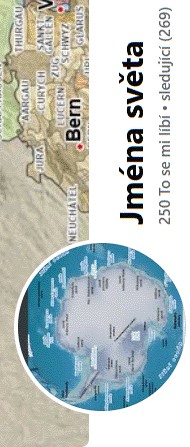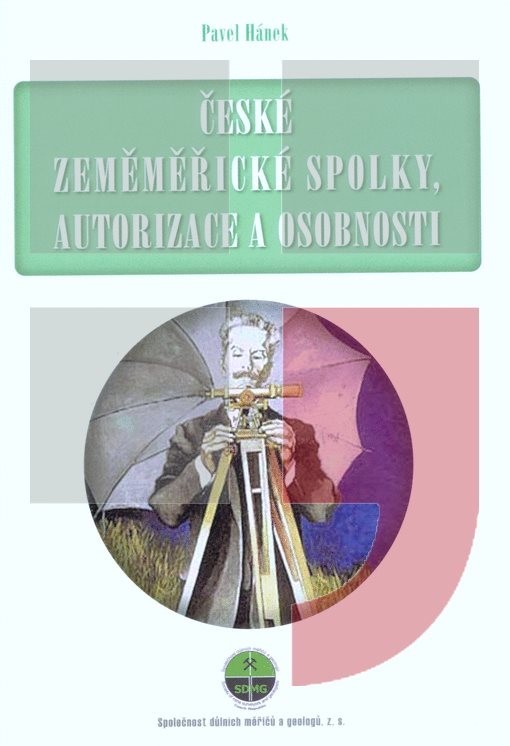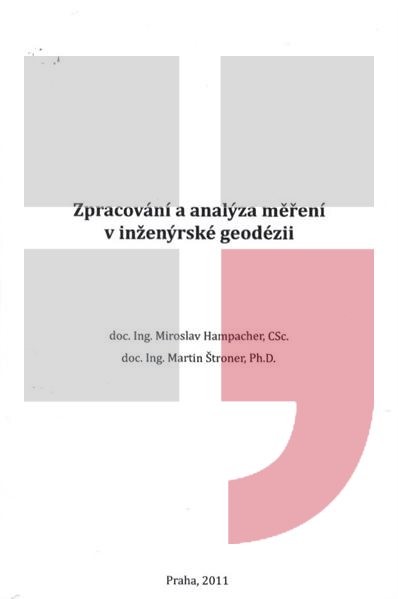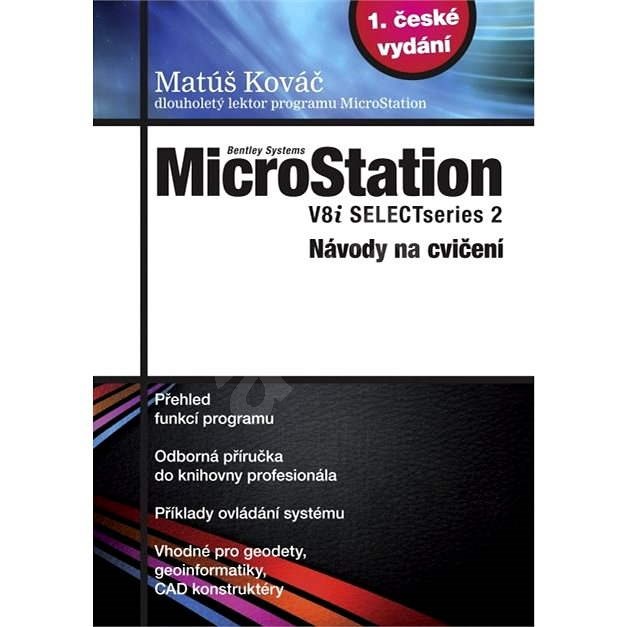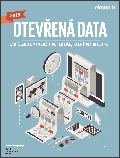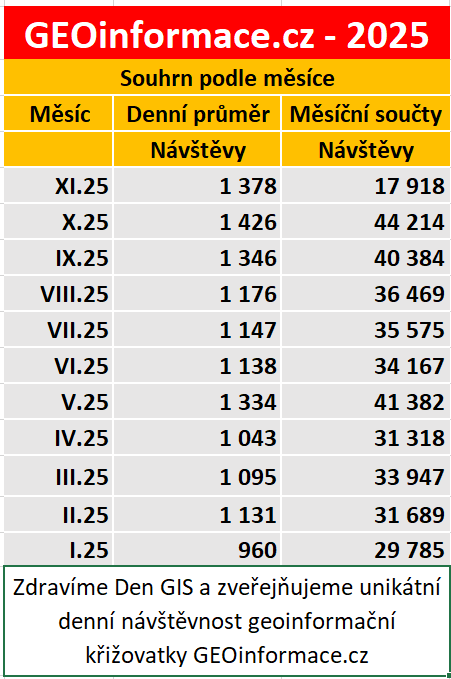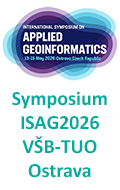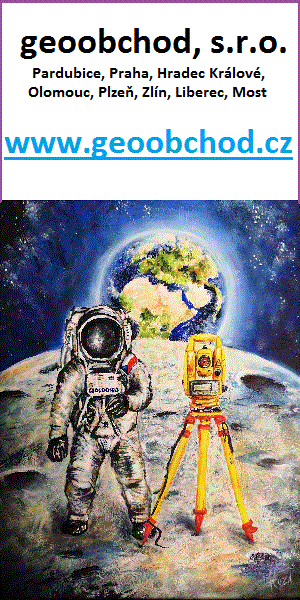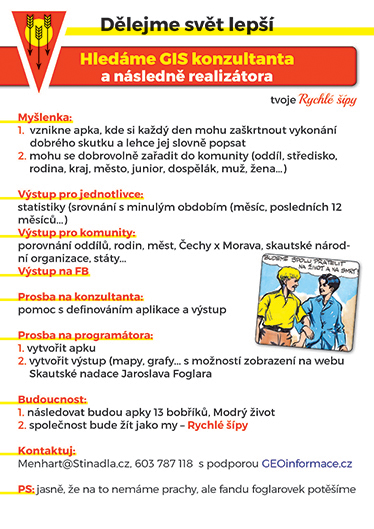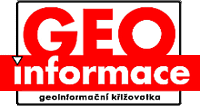zprávy
zdroje zpráv:Uzavření pracoviště
10.10.2022 18:34 ČÚZK - předpisy a opatření Katastrální úřad pro Plzeňský kraj - Katastrální pracoviště Kralovicezveřejnil novou aktualitu: Katastrální pracoviště Kralovice bude dne 27.10.2022 z provozních důvodů uzavřeno (odstávka elektrické energie).
Krátka správa č. 442022
10.10.2022 16:01 Komora geodetů a kartografů SRThe post Krátka správa č. 442022 appeared first on Komora geodetov a kartografov.
Krátka správa č. 44/2022
10.10.2022 16:01 Komora geodetů a kartografů SRThe post Krátka správa č. 44/2022 appeared first on Komora geodetov a kartografov.
Italy’s Stromboli erupts
10.10.2022 16:00 ESA Observing the Earth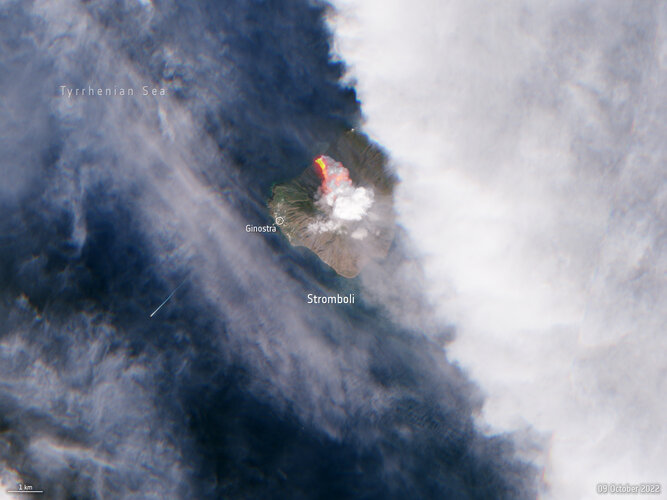 Image:
A volcano on the Italian island of Stromboli erupted early on Sunday morning, releasing huge plumes of smoke and a lava flow pouring into the sea. The Copernicus Sentinel-2 mission captured this image of the aftermath less than five hours after the eruption.
Image:
A volcano on the Italian island of Stromboli erupted early on Sunday morning, releasing huge plumes of smoke and a lava flow pouring into the sea. The Copernicus Sentinel-2 mission captured this image of the aftermath less than five hours after the eruption.
Krátka správa č. 43/2022
10.10.2022 15:59 Komora geodetů a kartografů SRThe post Krátka správa č. 43/2022 appeared first on Komora geodetov a kartografov.
Digitální technická mapa ČR
10.10.2022 15:31 GEPROV souvislosti s digitální technickou mapou ČR (DTM ČR), Vás chceme ujistit, že: Verze 16 našich systémů (MISYS, KOKEŠ, PROLAND, Geoportál GEPRO) jsou plně připraveny k práci s daty DTM ČR a jejich plnému využití. Systémy MISYS, KOKEŠ i PROLAND umožňují data do digitální technické mapy krajů pomocí jednotného výměnného formátu (JVF DTM) předávat a …
Digitální technická mapa ČR Pokračovat ve čtení »
Článek Digitální technická mapa ČR se nejdříve objevil na GEPRO.
TRUTHS on the table at ESA’s Ministerial Council
10.10.2022 14:45 ESA Observing the Earth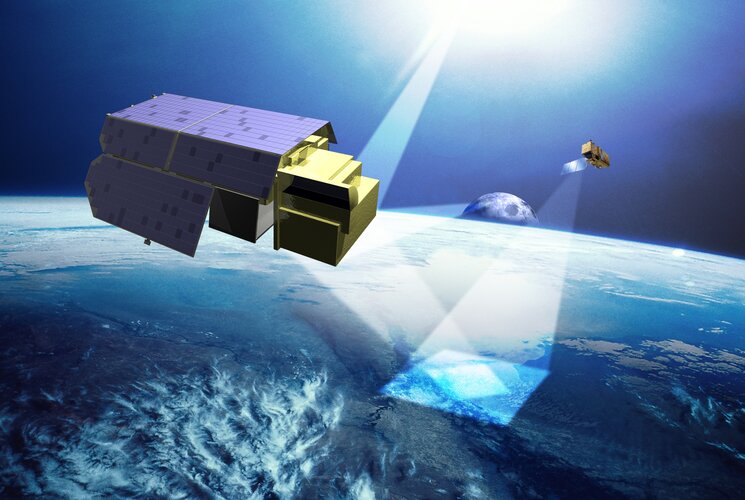
With the satellite and instrument design consolidated and the scientific community assured it will deliver the data they need, TRUTHS has been approved as part of Earth Observation Programme proposal for the upcoming ESA Council Meeting at Ministerial Level. Carrying a primary International System of Units reference system, TRUTHS promises to set the gold standard for climate measurements.
Citic Heavy Industries Uses Collaborative BIM Technology to Deliver Green, Smart Cement Factory
10.10.2022 14:05 Bentley SystemsCitic Heavy Industries Uses Collaborative BIM Technology to Deliver Green, Smart Cement Factory
The post Citic Heavy Industries Uses Collaborative BIM Technology to Deliver Green, Smart Cement Factory appeared first on Bentley Systems | Infrastructure Engineering Software Company.Citic Heavy Industries Uses Collaborative BIM Technology to Deliver Green, Smart Cement Factory
10.10.2022 14:05 Bentley SystemsTechInvestOctober 10, 2022 | Press Coverage Read More
The post Citic Heavy Industries Uses Collaborative BIM Technology to Deliver Green, Smart Cement Factory appeared first on Bentley Systems | Infrastructure Engineering Software Company.Citic Heavy Industries Uses Collaborative BIM Technology to Deliver Green, Smart Cement Factory
10.10.2022 14:05 Bentley SystemsTechInvest October 10, 2022 | Press Coverage Read More
The post Citic Heavy Industries Uses Collaborative BIM Technology to Deliver Green, Smart Cement Factory appeared first on Bentley Systems | Infrastructure Engineering Software Company.Earth observation inspires global inventiveness
10.10.2022 11:35 ESA Observing the Earth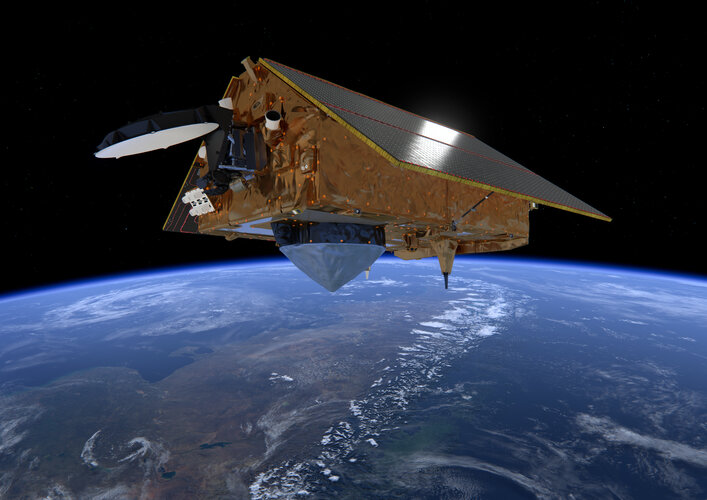
Today our home planet Earth is being more closely monitored than at any time in its history. Some 1 460 Earth-observing satellites have been launched during the last two decades, with Europe’s Copernicus Sentinel fleet in the forefront of environmental data gathering. A new report led by the European Patent Office examining associated patent filings reveals a 1 800% increase in the same period – with European activity comparatively stagnant compared to international competitors.
20221010 - uzavření pracovistě KP Žatec 25.10.2022
10.10.2022 11:03 ČÚZK - předpisy a opatření Katastrální úřad pro Ústecký kraj - Katastrální pracoviště Žatec zveřejnil novou aktualitu: V úterý 25.10.2022 bude technických důvodů uzavřeno katastrální pracoviště v Žatci.Neodkladná podání můžete učinit na ostatních pracovištích KÚ pro Ústecký kraj.
20221010 - uzavření pracovistě KP Žatec 25.10.2022
10.10.2022 11:03 ČÚZK - předpisy a opatření Katastrální úřad pro Ústecký kraj - Katastrální pracoviště Žatec zveřejnil novou aktualitu: V úterý 25.10.2022 bude z technických důvodů uzavřeno katastrální pracoviště v Žatci.Neodkladná podání můžete učinit na ostatních pracovištích KÚ pro Ústecký kraj.
20221010 - uzavření pracovistě KP Žatec 25.10.2022
10.10.2022 11:03 ČÚZK /Urady/Katastralni-urady/Katastralni-urady/Katastralni-urad-pro-Ustecky-kraj/Katastralni-pracoviste/KP-Zatec/O-uradu/Aktuality/20221010-uzavreni-pracoviste-KP-Zatec-25-10-202220221010 - uzavření pracovistě KP Žatec 25.10.2022
10.10.2022 11:03 ČÚZK /Urady/Katastralni-urady/Katastralni-urady/Katastralni-urad-pro-Ustecky-kraj/O-uradu/Aktuality/20221010-uzavreni-pracoviste-KP-Zatec-25-10-202220221010 - uzavření pracovistě KP Žatec 25.10.2022
10.10.2022 11:03 ČÚZK - předpisy a opatření Katastrální úřad pro Ústecký kraj - Katastrální pracoviště Žatec zveřejnil novou aktualitu: V úterý 25.10.2022 bude z technických důvodů uzavřeno katastrální pracoviště v Žatci.Neodkladná podání můžete učinit na ostatních pracovištích KÚ pro Ústecký kraj.
20221010 - uzavření pracovistě KP Žatec 25.10.2022
10.10.2022 11:03 ČÚZK - předpisy a opatření Katastrální úřad pro Ústecký kraj - Katastrální pracoviště Žatec zveřejnil novou aktualitu: V úterý 25.10.2022 bude technických důvodů uzavřeno katastrální pracoviště v Žatci.Neodkladná podání můžete učinit na ostatních pracovištích KÚ pro Ústecký kraj.
výběrové řízení na KP Žďár nad Sázavou
10.10.2022 10:17 ČÚZK - předpisy a opatření Katastrální úřad pro Vysočinu - Katastrální pracoviště Žďár nad Sázavou zveřejnil novou aktualitu: Oznámení o vyhlášení výběrového řízení na služební místo rada/odborný rada v oddělení aktualizace KN Katastrálního pracoviště Žďár nad Sázavou na Katastrálním úřadu pro Vysočinu.rada-odborný rada-aktualizace KN-KP Žďár nad Sázavou
10.10.2022 9:39 ČÚZK /Urady/Katastralni-urady/Katastralni-urady/Katastralni-urad-pro-Vysocinu/Uredni-deska/Oznameni-a-jina-uredni-sdeleni/Volna-mista/DMS/rada-odborny-rada-aktualizace-KN-KP-Zdar-nad-Sazavrada-odborný rada-aktualizace KN-KP Žďár nad Sázavou
10.10.2022 9:39 ČÚZK - volná místa Katastrální úřad pro Vysočinu Katastrální pracoviště Žďár nad Sázavou vypisuje výběrové řízení na místo rada-odborný rada-aktualizace KN-KP Žďár nad Sázavourada-odborný rada-aktualizace KN-KP Žďár nad Sázavou
10.10.2022 9:39 ČÚZK - předpisy a opatření Katastrální úřad pro Vysočinu Katastrální pracoviště Žďár nad Sázavouvypisuje výběrové řízení na místo
rada-odborný rada-aktualizace KN-KP Žďár nad Sázavou
20221010 - volné místo - Referent rozpočtu v ekonomickém oddělení kanceláře ředitele na KÚ pro ÚK
10.10.2022 7:37 ČÚZK /Urady/Katastralni-urady/Katastralni-urady/Katastralni-urad-pro-Ustecky-kraj/O-uradu/Aktuality/20221010-volne-misto-Referent-rozpoctu-v-ekono20221010 - volné místo - Referent rozpočtu v ekonomickém oddělení kanceláře ředitele na KÚ pro ÚK
10.10.2022 7:37 ČÚZK - předpisy a opatření Katastrální úřad pro Ústecký kraj zveřejnil novou aktualitu: Nabídka volného místa - Referent rozpočtu v ekonomickém oddělení kanceláře ředitele katastrálního úřadu na Katastrálním úřadu pro Ústecký krajReferent rozpočtu v ekonomickém oddělení kanceláře ředitele katastrálního úřadu na Katastrálním úřad
10.10.2022 7:32 ČÚZK - volná místa Katastrální úřad pro Ústecký kraj kancelář ředitele vypisuje výběrové řízení na místo Referent rozpočtu v ekonomickém oddělení kanceláře ředitele katastrálního úřadu na Katastrálním úřadReferent rozpočtu v ekonomickém oddělení kanceláře ředitele katastrálního úřadu na Katastrálním úřad
10.10.2022 7:32 ČÚZK /Urady/Katastralni-urady/Katastralni-urady/Katastralni-urad-pro-Ustecky-kraj/Volna-mista/DMS/Referent-rozpoctu-v-ekonomickem-oddeleni-kancelareReferent rozpočtu v ekonomickém oddělení kanceláře ředitele katastrálního úřadu na Katastrálním úřad
10.10.2022 7:32 ČÚZK - předpisy a opatření Katastrální úřad pro Ústecký kraj kancelář ředitelevypisuje výběrové řízení na místo
Referent rozpočtu v ekonomickém oddělení kanceláře ředitele katastrálního úřadu na Katastrálním úřadu pro Ústecký kraj
Výběrové řízení na pozici odborný / vrchní referent v oddělení obnovy katastrálního operátu technick
10.10.2022 6:40 ČÚZK /Urady/Katastralni-urady/Katastralni-urady/Katastralni-urad-pro-Kralovehradecky-kraj/Uredni-deska/Oznameni-a-jina-uredni-sdeleni/Volna-mista/DMS/Vyberove-rizeni-na-pozici-odborny-vrchni-referenVýběrové řízení na pozici odborný / vrchní referent v oddělení obnovy katastrálního operátu technick
10.10.2022 6:40 ČÚZK - předpisy a opatření Katastrální úřad pro Královéhradecký kraj technický útvarvypisuje výběrové řízení na místo
Výběrové řízení na pozici odborný / vrchní referent v oddělení obnovy katastrálního operátu technického útvaru
Výběrové řízení na pozici odborný / vrchní referent v oddělení obnovy katastrálního operátu technick
10.10.2022 6:40 ČÚZK - volná místa Katastrální úřad pro Královéhradecký kraj technický útvar vypisuje výběrové řízení na místo Výběrové řízení na pozici odborný / vrchní referent v oddělení obnovy katastrálního operátu technickRaveling. Nenápadný škůdce, kterého brzy odhalí CleveRA
10.10.2022 2:00 VARS.czCleveRA je dokonalý nástroj pro hospodaření s vozovkami. Data, která poskytuje správcům komunikací, každý rok ušetří možná i miliardy na rekonstrukcích silnic, kterým lze předejít důslednější údržbou a drobnějšími opravami. Měřicí vůz dokáže už dnes měřit víc parametrů, než aktuálně vyhodnocujeme. Už brzy se to ale změní. Největší pozornost jsme zaměřili na „raveling“.
Pozvánka na přednášku The restoration of the Rhone: feedbacks on 25 years of implementation and monitoring
10.10.2022 0:00 Geografický ústav MU10 Highlights from an eventful EU Space Week
7.10.2022 15:16 European GNSS Agency
EU Space Week 2022 welcomed over 3000 visitors (with more than 1100 on-site in Prague) and 150 presenters, who joined either in person in Prague or virtually from home in 35 sessions. Needless to say, it was a busy week, with far too much happening to summarise in a single article. So, instead, here are 10 highlights that we took away from four days of informative sessions, insightful keynote speeches and interesting demos from space-based companies.
1. Space is the foundation from which to build Europe’s resilience
Key stakeholders and policymakers shared what they considered to be the most pressing topics facing the EU Space sector. At the top of the list: secured communications, sustainability and resilience. “All the components of the EU Space Programme concur to building Europe’s resilience and leadership in the global space ecosystem,” said European Commissioner for the Internal Market Thierry Breton.
2. Funding and support are critical
During the CASSINI Overview session, one company noted how the funding and support they received from EUSPA was critical to their early-stage success. “We appreciated talking to someone that knew about the market and the technologies,” they said.
3. EU Space keeps citizens safe
Industry representative reminded that Copernicus and Galileo play a central role in keeping people safe during natural and climate-related disasters, including extreme heatwaves. “By sending timely alerts, hospitals, healthcare providers and emergency first responders can reduce response times and be better prepared to quickly treat victims – all of which helps save lives,” he said.
4. EU Space supports European policies
It has been reminded to all that Copernicus supports key policies like the EU Green Deal and the Digital Transformation. Earth Observation is a key enabler to developing the new digital capacities needed to address a range of societal challenges, including climate change.
5. Making space for the next generation
To evolve, EU Space needs to ensure the next generation of space personnel have the skills they need to succeed – and lead. This starts by bridging the gap between what students learn at university and the needs of the EU Space industry.
6. Diversity matters
Having a diverse workforce is a key factor for a thriving and successful business, and space is no exception. A speaker reminded that innovation comes when there’s diversity.
7. Numbers are stunning
Galileo is a success! During the Galileo Status session, participants were reminded how much Galileo has already achieved – including the fact that there are now over 3.5 billion Galileo-enabled devices have been sold around the world.
8. Users want more
With over 300 EU Space users represented at this year’s User Consultation Platform, EUSPA received a lot of valuable feedback, including the need for more resilience and security, more sustainability, more growth, and even more user engagement.
9. Europe is powered by EU Space
EUSW showcased an array of demos and applications powered by EU Space, including robots for precision agriculture and drones for urban planning. You can see some of the many European companies that exhibited their solutions in the video below.
10. Inclusion matters, and space can help
The EU Space Programme plays an important role in building a more inclusive society. For example, the upcoming Galileo High Accuracy service will be able to improve urban navigation and wayfinding for people with disabilities. It has been recalled that one out of every five people has a disability, so not a niche market and it means that everyone must play a role in making space more inclusive.
Want to see more highlights from EUSW22? Be sure to check out our Twitter feed and send your feedback.
See you next year at EU Space Week 2023!
Media note: This feature can be republished without charge provided the European Union Agency for the Space Programme (EUSPA) is acknowledged as the source at the top or the bottom of the story. You must request permission before you use any of the photographs on the site. If you republish, we would be grateful if you could link back to the EUSPA website (http://www.euspa.europa.eu).
An Update to the MVD Policy
7.10.2022 14:26 buildingSMART.orgLondon, U.K. – October 7, 2022 - buildingSMART International is increasing consistency in the terminology around information requirement definitions. In the last two and a half years, bSI has been educating the…
The post An Update to the MVD Policy appeared first on buildingSMART International.
Information Requirement Definitions
7.10.2022 14:26 buildingSMART.orgLondon, U.K. – October 7, 2022 - buildingSMART International is increasing consistency in the terminology around information requirement definitions. In the last two and a half years, bSI has been educating the…
The post Information Requirement Definitions appeared first on buildingSMART International.
Increasing clarity for information requirements
7.10.2022 14:26 buildingSMART.orgLondon, U.K. – October 7, 2022 - buildingSMART International is increasing consistency in the terminology around information requirement definitions. In the last two and a half years, bSI has been educating the…
The post Increasing clarity for information requirements appeared first on buildingSMART International.
20221007_rada/odborný rada oddělení právních vztahů k nemovitostem
7.10.2022 13:57 ČÚZK /Urady/Katastralni-urady/Katastralni-urady/Katastralni-urad-pro-Stredocesky-kraj/Katastralni-pracoviste/KP-Rakovnik/O-uradu/Aktuality/20210922_Odborny-referent-oddeleni-aktualizace-(1)20221007_rada/odborný rada oddělení právních vztahů k nemovitostem
7.10.2022 13:57 ČÚZK - předpisy a opatření Katastrální úřad pro Středočeský kraj - Katastrální pracoviště Rakovník Vyhlášení výběrového řízení: rada/odborný rada oddělení právních vztahů k nemovitostem V části "Úřední deska", v sekci "Oznámení a jiná úřední sdělení" bylo vystaveno "Oznámení o vyhlášení výběrového řízení na obsazení služebního místa rada/odborný rada oddělení právních vztahů k nemovitostem"rada/odborný rada oddělení právních vztahů k nemovitostem
7.10.2022 13:56 ČÚZK - předpisy a opatření Katastrální úřad pro Středočeský kraj Katastrální pracoviště Rakovníkvypisuje výběrové řízení na místo
rada/odborný rada oddělení právních vztahů k nemovitostem
rada/odborný rada oddělení právních vztahů k nemovitostem
7.10.2022 13:56 ČÚZK /Urady/Katastralni-urady/Katastralni-urady/Katastralni-urad-pro-Stredocesky-kraj/Uredni-deska/Oznameni-a-jina-uredni-sdeleni/Volna-mista/DMS/rada-odborny-rada-oddeleni-pravnich-vztahu-k-nemovrada/odborný rada oddělení právních vztahů k nemovitostem
7.10.2022 13:56 ČÚZK - volná místa Katastrální úřad pro Středočeský kraj Katastrální pracoviště Rakovník vypisuje výběrové řízení na místo rada/odborný rada oddělení právních vztahů k nemovitostemNedostupné produkční ISÚI
7.10.2022 10:10 ČÚZK /ruian/Editacni-agendovy-system-ISUI/Provozni-informace-a-odstavky/Archiv-PROD/Nedostupne-produkcni-ISUI-(3)Earth from Space: Bouches-du-Rhône
7.10.2022 10:00 ESA Observing the Earth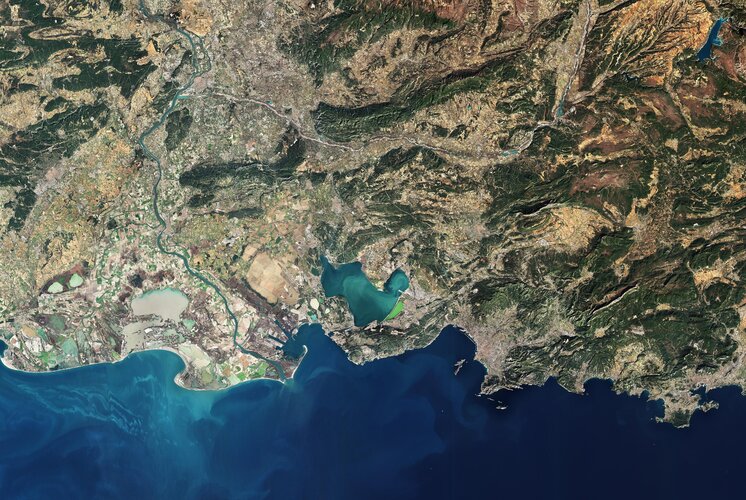
The port town of Fos-Sur-Mer, in the southern part of Bouches-du-Rhône, France, is featured in this image captured by Copernicus Sentinel-2. It is from here where the first Meteosat Third Generation Imager satellite set sail last week on its journey to Europe’s Spaceport in French Guiana.
Earth from Space: Bouches-du-Rhône
7.10.2022 10:00 ESA Observing the Earth
The port town of Fos-Sur-Mer, in the southern part of Bouches-du-Rhône, France, is featured in this image captured by Copernicus Sentinel-2. It is from here where the first Meteosat Third Generation Imager satellite set sail last week on its journey to Europe’s Spaceport in French Guiana.
20221007_Odborný rada oddělení právních vztahů k nemovitostem
7.10.2022 9:28 ČÚZK /Urady/Katastralni-urady/Katastralni-urady/Katastralni-urad-pro-Stredocesky-kraj/Katastralni-pracoviste/KP-Kladno/O-uradu/Aktuality/20210922_Odborny-referent-oddeleni-aktualizace-(7)20221007_Odborný rada oddělení právních vztahů k nemovitostem
7.10.2022 9:28 ČÚZK - předpisy a opatření Katastrální úřad pro Středočeský kraj - Katastrální pracoviště Kladno Vyhlášení výběrového řízení: Odborný rada oddělení právních vztahů k nemovitostem V části "Úřední deska", v sekci "Oznámení a jiná úřední sdělení" bylo vystaveno "Oznámení o vyhlášení výběrového řízení na obsazení služebního místa Odborný rada oddělení právních vztahů k nemovitostem"Odborný rada oddělení právních vztahů k nemovitostem
7.10.2022 9:27 ČÚZK - předpisy a opatření Katastrální úřad pro Středočeský kraj Katastrální pracoviště Kladnovypisuje výběrové řízení na místo
Odborný rada oddělení právních vztahů k nemovitostem
Odborný rada oddělení právních vztahů k nemovitostem
7.10.2022 9:27 ČÚZK - volná místa Katastrální úřad pro Středočeský kraj Katastrální pracoviště Kladno vypisuje výběrové řízení na místo Odborný rada oddělení právních vztahů k nemovitostemGeomatika v projektech (pozvánka)
7.10.2022 8:44 GISportal.cz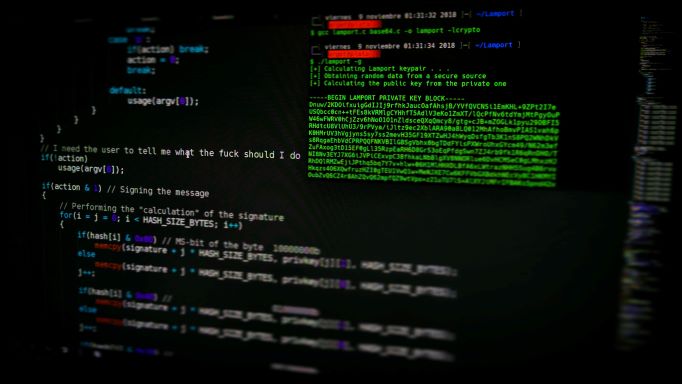
Již příští týden (středa a čtvrtek) se koná tradiční setkání Geomatika v projektech. Středa bude probíhat v angličtině a čtvrtek v češtině. Pokud Vás program zaujme, můžete se ještě přihlásit a do Plzně dorazit!
The post Geomatika v projektech (pozvánka) appeared first on GISportal.cz.
Geomatika v projektech (pozvánka)
7.10.2022 8:44 GISportal.cz
Již příští týden (středa a čtvrtek) se koná tradiční setkání Geomatika v projektech. Středa bude probíhat v angličtině a čtvrtek v češtině. Pokud Vás program zaujme, můžete se ještě přihlásit a do Plzně dorazit!
The post Geomatika v projektech (pozvánka) appeared first on GISportal.cz.
VŘ na prodej nepotřebného majetku
7.10.2022 7:14 ČÚZK - předpisy a opatřeníKatastrální úřad pro Liberecký kraj nabízí nepotřebný majetek k odkupu.
VŘ na prodej nepotřebného majetku
Upozornění - stavební úpravy ve vstupní hale budovy KP Most
7.10.2022 6:42 ČÚZK - předpisy a opatření Katastrální úřad pro Ústecký kraj - Katastrální pracoviště Most zveřejnil novou aktualitu: UPOZORNĚNÍNa katastrálním pracovišti jsou prováděny stavební úpravy ve vstupní hale budovy.
Prosím, dbejte na svou bezpečnost!
Za zhoršené podmínky při vyřizování veřejnosti se předem omlouváme.
Upozornění - stavební úpravy ve vstupní hale budovy KP Most
7.10.2022 6:42 ČÚZK /Urady/Katastralni-urady/Katastralni-urady/Katastralni-urad-pro-Ustecky-kraj/Katastralni-pracoviste/KP-Most/O-uradu/Aktuality/Upozorneni-stavebni-upravy-ve-vstupni-hale-budovObhajoby dizertačních prací
7.10.2022 0:00 Geografický ústav MUV rámci DSP Sociální geografie a regionální rozvoj se v mapovně Geografického ústavu v nejbližší době uskuteční 3 obhajoby dizertačních prací:
v pátek 7. 10. 2022
Mgr. Irena HONSNEJMANOVÁ - Působení fyzického prostředí na užívání alkoholu a tabáku u dospívajících (v návaznosti na neveřejnou SDZ od 10 hod)
RNDr. Petr MAREK - České země coby sociální konstrukty a dynamické procesy (v návaznosti na neveřejnou SDZ od 13 hod)
ve čtvrtek 13. 10. 2022 od 10 hod
Natalija Levandovskaja - Rekreační a turistické využívání sledovaných příměstských lesů Soči, Bratislavy a Brna s hodnocením antropogenních dopadů
FUKUI COMPUTER Partners with Bentley Systems to Promote Digital Transformation
6.10.2022 22:12 Bentley SystemsFUKUI COMPUTER will leverage digital technologies from Bentley Systems to provide solutions for Digital Transformation (DX) in Japan’s infrastructure field promoted by the Ministry of Land, Infrastructure, Transport, and Tourism.
The post FUKUI COMPUTER Partners with Bentley Systems to Promote Digital Transformation appeared first on Bentley Systems | Infrastructure Engineering Software Company.V programu konference Geomatika v projektech je například digitální model ulice nebo 3D aspekty územního plánování
6.10.2022 18:56 GeoBusinessVe dnech 12. a 13. října 2022 se v Plzni uskuteční další ročník konference Geomatika v projektech. Vstup na akci je zdarma, jen je potřeba nahlásit pořadatelům vaši účast. Vystavěná prostředí, GIS v regionech, GIS a územní plánování Středa 12. 10. 2022 12:00-12:15 Karel Janečka: Uvítání vedoucího katedry, Pavel Hájek: Zahájení konference 12:15-13:35 Vystavěná prostředí, […]
The post V programu konference Geomatika v projektech je například digitální model ulice nebo 3D aspekty územního plánování appeared first on GeoBusiness.
Česká komora zeměměřičů postupuje do druhého čtení
6.10.2022 17:14 ZeměměřičZemědělský výbor PSP ČR na svém zasedání 4. října 20222 rozhodl 11 hlasy z 13 přítomných poslanců doporučit Poslanecké sněmovně Parlamentu ČR schválení pozměňovacího návrhu Asociace podnikatelů v geomatice k zákonu o zeměměřictví, kterým by se ustanovila Česká komora zeměměřičů. Návrh asociace podpořila řada organizací: Česká komora architektů, Česká komora autorizovaných inženýrů a techniků činných ve výstavbě, Česká asociace pro geoinformace, […]
The post Česká komora zeměměřičů postupuje do druhého čtení appeared first on Zeměměřič.
Zastavené komunikační fronty do RÚIAN
6.10.2022 15:30 ČÚZK /ruian/Editacni-agendovy-system-ISUI/Provozni-informace-a-odstavky/Archiv-PROD/Zastavene-komunikacni-fronty-do-RUIANDigital Construction Works develops new fully-integrated monitoring platform
6.10.2022 14:52 Bentley SystemsDigital Construction Works develops new fully-integrated monitoring platform
The post Digital Construction Works develops new fully-integrated monitoring platform appeared first on Bentley Systems | Infrastructure Engineering Software Company.Zkrácená otevírací doba v pátek 7.10.2022
6.10.2022 14:32 GEUSware V pátek 7.10.2022 máme z důvodu nemoci otevřeno pouze 8:00-12:00. Technická podpora programu GEUS (na hotline lince 212 248 048) je v provozu do 15:00.
Omlouváme se za komplikace a děkujeme za pochopení.
Inovativní přístupy v rozvoji měst, obcí a regionů (pozvánka)
6.10.2022 11:33 GISportal.cz
Příjměte pozvánku na konferenci „Inovativní přístupy v rozvoji měst, obcí a regionů„, kterou pořádá Katedra sociální geografie a regionálního rozvoje, Ostravská univerzita, ve dnech 20. a 21. října v ostravském Kulturním domě K-TRIO. K vidění budou příspěvky českých i zahraničních odborníků a samotná konference je pro účastníky zdarma. Tematické oblasti konference jsou: SMART ENERGETIKA SMART […]
The post Inovativní přístupy v rozvoji měst, obcí a regionů (pozvánka) appeared first on GISportal.cz.
Inovativní přístupy v rozvoji měst, obcí a regionů (pozvánka)
6.10.2022 11:33 GISportal.cz
Příjměte pozvánku na konferenci „Inovativní přístupy v rozvoji měst, obcí a regionů„, kterou pořádá Katedra sociální geografie a regionálního rozvoje, Ostravská univerzita, ve dnech 20. a 21. října v ostravském Kulturním domě K-TRIO. K vidění budou příspěvky českých i zahraničních odborníků a samotná konference je pro účastníky zdarma. Tematické oblasti konference jsou: SMART ENERGETIKA SMART […]
The post Inovativní přístupy v rozvoji měst, obcí a regionů (pozvánka) appeared first on GISportal.cz.
DP a WSDP - aktuálnost poskytovaných dat
6.10.2022 11:31 ČÚZK /Aplikace-DP-do-KN/Aplikace-DP-do-KN/Archiv-DP/367614DP a WSDP - aktuálnost poskytovaných dat
6.10.2022 11:31 ČÚZK - předpisy a opatření Vážení uživatelé dálkového přístupu a webových služeb dálkového přístupu,problém s aktuálností poskytovaných dat byl odstraněn.
Omlouváme se za komplikace.
DP a WSDP - aktuálnost poskytovaných dat
6.10.2022 11:31 Dálkový přístup k údajům KN ČR Vážení uživatelé dálkového přístupu a webových služeb dálkového přístupu,problém s aktuálností poskytovaných dat byl odstraněn.
Omlouváme se za komplikace.
Neaktuální data DP a WSDP
6.10.2022 10:44 GEUSware Upozorňujeme naše uživatele na neaktuálnost dat služeb dálkového přístupu a webových služeb dálkového přístupu. Dle informací ČÚZK jsou v tuto chvíli sestavy vydávány k datu 5.10.2022 a času 12:15, nikoliv k aktuálnímu času. Neaktuální data DP a WSDP
6.10.2022 10:44 GEUSware Dle informací ČÚZK byly 6.10.2022 dopoledne vydávány sestavy k datu 5.10.2022 a času 12:15, nikoliv k aktuálnímu času. Nyní je již problém odstraněn - informace z 6.10.2022,12:00.výběrové řízení na TO při KP Pelhřimov
6.10.2022 10:27 ČÚZK - předpisy a opatření Katastrální úřad pro Vysočinu - Katastrální pracoviště Pelhřimov zveřejnil novou aktualitu: Oznámení o vyhlášení výběrového řízení na služební místo odborný referent/vrchní referent v oddělení obnovy katastrálního operátu I Technického odboru na Katastrálním úřadu pro Vysočinu, místo výkonu služby Pelhřimov.výběrové řízení na TO při KP Pelhřimov
6.10.2022 10:27 ČÚZK /Urady/Katastralni-urady/Katastralni-urady/Katastralni-urad-pro-Vysocinu/O-uradu/Aktuality/vyberove-rizeni-na-TO-pri-KP-Pelhrimovodborný- vrchní referent-oddělení OKO I - Technický odbor
6.10.2022 10:07 ČÚZK /Urady/Katastralni-urady/Katastralni-urady/Katastralni-urad-pro-Vysocinu/Uredni-deska/Oznameni-a-jina-uredni-sdeleni/Volna-mista/DMS/odborny-vrchni-referent-oddeleni-OKO-I-Technickodborný- vrchní referent-oddělení OKO I - Technický odbor
6.10.2022 10:07 ČÚZK - předpisy a opatření Katastrální úřad pro Vysočinu Katastrální pracoviště Pelhřimovvypisuje výběrové řízení na místo
odborný- vrchní referent-oddělení OKO I - Technický odbor
odborný- vrchní referent-oddělení OKO I - Technický odbor
6.10.2022 10:07 ČÚZK - volná místa Katastrální úřad pro Vysočinu Katastrální pracoviště Pelhřimov vypisuje výběrové řízení na místo odborný- vrchní referent-oddělení OKO I - Technický odborSatellites detect methane plume in Nord Stream leak
6.10.2022 10:02 ESA Observing the Earth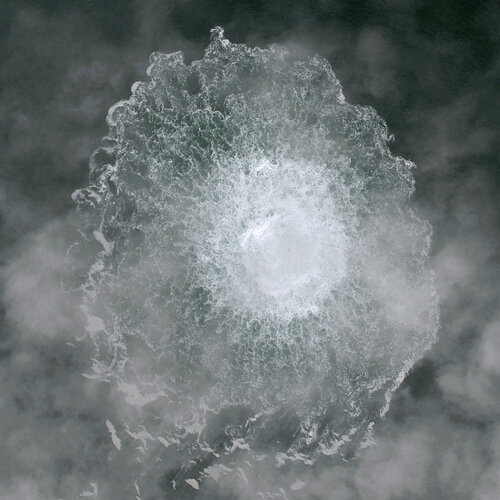
Following unusual seismic disturbances in the Baltic Sea, several leaks were discovered last week in the underwater Nord Stream 1 and 2 gas pipelines, near Denmark and Sweden. Neither pipeline was transporting gas at the time of the blasts, but they still contained pressurised methane – the main component of natural gas – which spewed out producing a wide stream of bubbles on the sea surface.
With the unexplained gas release posing a serious question about the incident’s environmental impact, a suite of complementary Earth observation satellites carrying optical and radar imaging instruments were called upon to characterise the gas leak bubbling in the Baltic.
Krátka správa č. 42/2022
6.10.2022 8:37 Komora geodetů a kartografů SRThe post Krátka správa č. 42/2022 appeared first on Komora geodetov a kartografov.
DP a WSDP - aktuálnost poskytovaných dat
6.10.2022 8:17 ČÚZK /Aplikace-DP-do-KN/Aplikace-DP-do-KN/Archiv-DP/367533DP a WSDP - aktuálnost poskytovaných dat
6.10.2022 8:17 Dálkový přístup k údajům KN ČR Vážení uživatelé dálkového přístupu a webových služeb dálkového přístupu,upozorňujeme na to, že v tuto chvíli jsou sestavy vydávány k datu 5.10.2022 a času 12:15, nikoliv k aktuálnímu času.
Na odstranění problému se intenzivně pracuje.
Omlouváme se za komplikace a děkujeme za pochopení
DP a WSDP - aktuálnost poskytovaných dat
6.10.2022 8:17 ČÚZK - předpisy a opatření Vážení uživatelé dálkového přístupu a webových služeb dálkového přístupu,upozorňujeme na to, že v tuto chvíli jsou sestavy vydávány k datu 5.10.2022 a času 12:15, nikoliv k aktuálnímu času.
Na odstranění problému se intenzivně pracuje.
Omlouváme se za komplikace a děkujeme za pochopení
Big Infrastructure Projects of the Year: Construction
5.10.2022 14:53 Bentley SystemsBig Infrastructure Projects of the Year: Construction
The post Big Infrastructure Projects of the Year: Construction appeared first on Bentley Systems | Infrastructure Engineering Software Company.A fluid situation
5.10.2022 14:53 Bentley SystemsHighlighting and mitigating the risks in water distribution using digital twins is the focus of Bentley's OpenFlows WaterSight, writes David Chadwick
The post A fluid situation appeared first on Bentley Systems | Infrastructure Engineering Software Company.Hellenic Aviation Service Provider to host EGNOS V3 ground station in Athens, Greece
5.10.2022 14:14 European GNSS Agency
EGNOS, Europe’s regional satellite-based augmentation system (SBAS), is undergoing a transformation.
Used to improve the accuracy and reliability of GNSS positioning information, EGNOS is designed to provide safety of life navigation services to aviation, maritime and land-based users across the EU. Part of the transition from the current version to Version 3 involves updating the EGNOS ground segment, an infrastructure that includes, amongst other components, 44 Ranging Integrity Monitoring Stations (RIMS).
“EGNOS counts on a long history of providing safety of life navigation services to aviation, maritime and land-based users over Europe. Together with our partners at the European Space Agency and industry, we are working on the next generation of EGNOS, called Version 3, that will also augment Galileo signals,” said EUSPA Executive Director Rodrigo da Costa.
The main function of the RIMS is to collect measurements from GPS satellites and transmit this raw data to the Mission Control Centres every second. The upgrade will ensure that these RIMS can also collect and transmit measurements from Galileo satellites.
‘’Greece is making concrete steps toward developing its space policy. The joint statement between EUSPA and HCAA for the hosting of the new EGNOS RIMS in Athens shows our country's commitment to digital transformation and its contribution to the EU Space Programme,’’ says Athanasios Staveris-Polykalas, Secretary General of Telecommunications & Posts.
The Hellenic Aviation Service Provider (HASP) has hosted an EGNOS RIMS in Athens, Greece since 2010. EUSPA, who is responsible for the exploitation of EGNOS, and HASP renewed their cooperation for a future generation of the RIMS ground infrastructure.
“HASP (former HCAA) is a major contributor to the successful services and performance achieved by the current EGNOS system, which has been delivering safety of life services for aviation since 2011, and will continue to provide high level services to the new EGNOS systems”, said HASP Governor Georgios Dritsakos.
Building on this successful experience, HASP was selected to host a new, EGNOS Version 3 ground station in Athens. “HASP is an important part of why EGNOS is the success it is today, and I am happy that they will be a part of this exciting new chapter,” added da Costa.
Media note: This feature can be republished without charge provided the European Union Agency for the Space Programme (EUSPA) is acknowledged as the source at the top or the bottom of the story. You must request permission before you use any of the photographs on the site. If you republish, we would be grateful if you could link back to the EUSPA website (http://www.euspa.europa.eu).
odborný referent/vrchní referent – návrh zápisu v katastru
5.10.2022 13:13 ČÚZK /Urady/Katastralni-urady/Katastralni-urady/Katastralni-urad-pro-Olomoucky-kraj/Uredni-deska/Oznameni-a-jina-uredni-sdeleni/Volna-mista/DMS/odborny-referent-vrchni-referent-–-navrh-zapisu-vodborný referent/vrchní referent – návrh zápisu v katastru
5.10.2022 13:13 ČÚZK - předpisy a opatření Katastrální úřad pro Olomoucký kraj Katastrální pracoviště Jeseníkvypisuje výběrové řízení na místo
odborný referent/vrchní referent – návrh zápisu v katastru
odborný referent/vrchní referent – návrh zápisu v katastru
5.10.2022 13:13 ČÚZK - volná místa Katastrální úřad pro Olomoucký kraj Katastrální pracoviště Jeseník vypisuje výběrové řízení na místo odborný referent/vrchní referent – návrh zápisu v katastruodborný referent v oddělení právním č. 2 na Katastrálním pracovišti Brno-město
5.10.2022 13:00 ČÚZK - volná místa Katastrální úřad pro Jihomoravský kraj Katastrální pracoviště Brno-město vypisuje výběrové řízení na místo odborný referent v oddělení právním č. 2 na Katastrálním pracovišti Brno-městoodborný referent v oddělení právním č. 2 na Katastrálním pracovišti Brno-město
5.10.2022 13:00 ČÚZK /Urady/Katastralni-urady/Katastralni-urady/Katastralni-urad-pro-Jihomoravsky-kraj/Uredni-deska/Oznameni-a-jina-uredni-sdeleni/Volna-mista/DMS/odborny-referent-v-oddeleni-pravnim-c-2-na-Katastodborný referent v oddělení právním č. 2 na Katastrálním pracovišti Brno-město
5.10.2022 13:00 ČÚZK - předpisy a opatření Katastrální úřad pro Jihomoravský kraj Katastrální pracoviště Brno-městovypisuje výběrové řízení na místo
odborný referent v oddělení právním č. 2 na Katastrálním pracovišti Brno-město
20221005_Odborný rada oddělení právních vztahů k nemovitostem
5.10.2022 10:44 ČÚZK - předpisy a opatření Katastrální úřad pro Středočeský kraj - Katastrální pracoviště Kolín Vyhlášení výběrového řízení: Odborný rada oddělení právních vztahů k nemovitostem V části "Úřední deska", v sekci "Oznámení a jiná úřední sdělení" bylo vystaveno "Oznámení o vyhlášení výběrového řízení na obsazení služebního místa Odborný rada oddělení právních vztahů k nemovitostem"20221005_Odborný rada oddělení právních vztahů k nemovitostem
5.10.2022 10:44 ČÚZK /Urady/Katastralni-urady/Katastralni-urady/Katastralni-urad-pro-Stredocesky-kraj/Katastralni-pracoviste/KP-Kolin/O-uradu/Aktuality/20210922_Odborny-referent-oddeleni-aktualizace-(7)Odborný rada oddělení právních vztahů k nemovitostem
5.10.2022 10:42 ČÚZK - volná místa Katastrální úřad pro Středočeský kraj Katastrální pracoviště Kolín vypisuje výběrové řízení na místo Odborný rada oddělení právních vztahů k nemovitostemOdborný rada oddělení právních vztahů k nemovitostem
5.10.2022 10:42 ČÚZK - předpisy a opatření Katastrální úřad pro Středočeský kraj Katastrální pracoviště Kolínvypisuje výběrové řízení na místo
Odborný rada oddělení právních vztahů k nemovitostem
20221005 - VŘ Ředitel/ředitelka KP Praha-západ
5.10.2022 9:48 ČÚZK /Aktuality-resort/2022/20221004-VR-Reditel-reditelka-KP-Praha-zapad20221005 - VŘ Ředitel/ředitelka KP Praha-západ
5.10.2022 9:48 ČÚZK - předpisy a opatření Český úřad zeměměřický a katastrální zveřejnil novou aktualitu: Oznámení o vyhlášení výběrového řízení na obsazení služebního místa ředitele/ ředitelky Katastrálního pracoviště Praha-západ.20221005 - VŘ Ředitel/ředitelka KP Praha-západ
5.10.2022 9:48 ČÚZK - předpisy a opatření Český úřad zeměměřický a katastrálnízveřejnil novou aktualitu: Oznámení o vyhlášení výběrového řízení na obsazení služebního místa ředitele/ ředitelky Katastrálního pracoviště Praha-západ.
20221005 - VŘ Ředitel/ředitelka KP Praha-západ
5.10.2022 9:48 ČÚZK - aktuality v resortu Oznámení o vyhlášení výběrového řízení na obsazení služebního místa ředitele/ ředitelky Katastrálního pracoviště Praha-západ.20221005 - VŘ Ředitel/ředitelka KP Praha-západ
5.10.2022 9:48 ČÚZK - aktuality v resortu Oznámení o vyhlášení výběrového řízení na obsazení služebního místa ředitele/ ředitelky Katastrálního pracoviště Praha-západ.20221005_Ředitel sekce Katastrálního pracoviště Praha západ – odborný rada
5.10.2022 8:30 ČÚZK - předpisy a opatření Katastrální úřad pro Středočeský kraj - Katastrální pracoviště Praha-západ Vyhlášení výběrového řízení: Ředitel sekce Katastrálního pracoviště Praha západ – odborný rada V části "Úřední deska", v sekci "Oznámení a jiná úřední sdělení" bylo vystaveno "Oznámení o vyhlášení výběrového řízení na obsazení služebního místa Ředitel sekce Katastrálního pracoviště Praha západ – odborný rada"20221005_Ředitel sekce Katastrálního pracoviště Praha západ – odborný rada
5.10.2022 8:30 ČÚZK /Urady/Katastralni-urady/Katastralni-urady/Katastralni-urad-pro-Stredocesky-kraj/Katastralni-pracoviste/KP-Praha-zapad/O-uradu/Aktuality/20210922_Odborny-referent-oddeleni-aktualizace-(3)Ředitel sekce Katastrálního pracoviště Praha západ – odborný rada
5.10.2022 8:29 ČÚZK /Urady/Katastralni-urady/Katastralni-urady/Katastralni-urad-pro-Stredocesky-kraj/Uredni-deska/Oznameni-a-jina-uredni-sdeleni/Volna-mista/DMS/Reditel-sekce-Katastralniho-pracoviste-Praha-zapadŘeditel sekce Katastrálního pracoviště Praha západ – odborný rada
5.10.2022 8:29 ČÚZK - předpisy a opatření Katastrální úřad pro Středočeský kraj Katastrální pracoviště Praha-západvypisuje výběrové řízení na místo
Ředitel sekce Katastrálního pracoviště Praha západ – odborný rada
Ředitel sekce Katastrálního pracoviště Praha západ – odborný rada
5.10.2022 8:29 ČÚZK - volná místa Katastrální úřad pro Středočeský kraj Katastrální pracoviště Praha-západ vypisuje výběrové řízení na místo Ředitel sekce Katastrálního pracoviště Praha západ – odborný radaEuroCarto2022 (reportáž)
5.10.2022 8:26 GISportal.cz
Evropská kartografická konference EuroCarto22 sdružující všechny milovníky map se tentokrát konala na živo v krásných prostorách Technické univerzity ve Vídni od 19. do 21. září. O organizaci se podělila Mezinárodní kartografická asociace (ICA) s německou (DGfK), rakouskou (OKK), švýcarskou (SGK) a britskou (BCS) kartografickou společností. Zahájení konference proběhlo v neděli večer v nádherném Kuppelsaal, jehož strop vypadal jako spodek […]
The post EuroCarto2022 (reportáž) appeared first on GISportal.cz.
EuroCarto2022 (reportáž)
5.10.2022 8:26 GISportal.cz
Evropská kartografická konference EuroCarto22 sdružující všechny milovníky map se tentokrát konala na živo v krásných prostorách Technické univerzity ve Vídni od 19. do 21. září. O organizaci se podělila Mezinárodní kartografická asociace (ICA) s německou (DGfK), rakouskou (OKK), švýcarskou (SGK) a britskou (BCS) kartografickou společností. Zahájení konference proběhlo v neděli večer v nádherném Kuppelsaal, jehož strop vypadal jako spodek […]
The post EuroCarto2022 (reportáž) appeared first on GISportal.cz.
20221005 - volné místo - Odborný referent v OAaD KP Žatec na Katastrálním úřadu pro Ústec.kraj
5.10.2022 7:12 ČÚZK /Urady/Katastralni-urady/Katastralni-urady/Katastralni-urad-pro-Ustecky-kraj/Katastralni-pracoviste/KP-Zatec/O-uradu/Aktuality/20221005-volne-misto-Odborny-referent-v-OAaD-K20221005 - volné místo - Odborný referent v OAaD KP Žatec na Katastrálním úřadu pro Ústec.kraj
5.10.2022 7:12 ČÚZK - předpisy a opatření Katastrální úřad pro Ústecký kraj - Katastrální pracoviště Žatec zveřejnil novou aktualitu: Nabídka volného místa - Odborný referent v oddělení aktualizace a dokumentace katastru nemovitostí Katastrálního pracoviště Žatec na Katastrálním úřadu pro Ústecký kraj20221005 - volné místo - Odborný referent v OAaD KP Žatec na Katastrálním úřadu pro Ústec.kraj
5.10.2022 7:11 ČÚZK /Urady/Katastralni-urady/Katastralni-urady/Katastralni-urad-pro-Ustecky-kraj/O-uradu/Aktuality/20221005-volne-misto-Odborny-referent-v-OAaD-K20221005 - volné místo - Odborný referent v OAaD KP Žatec na Katastrálním úřadu pro Ústec.kraj
5.10.2022 7:11 ČÚZK - předpisy a opatření Katastrální úřad pro Ústecký kraj - Katastrální pracoviště Žatec zveřejnil novou aktualitu: Nabídka volného místa - Odborný referent v oddělení aktualizace a dokumentace katastru nemovitostí Katastrálního pracoviště Žatec na Katastrálním úřadu pro Ústecký krajOdborný referent v oddělení aktualizace a dokumentace katastru nemovitostí Katastrálního pracoviště
5.10.2022 7:07 ČÚZK - volná místa Katastrální úřad pro Ústecký kraj Katastrální pracoviště Žatec vypisuje výběrové řízení na místo Odborný referent v oddělení aktualizace a dokumentace katastru nemovitostí Katastrálního pracovištěOdborný referent v oddělení aktualizace a dokumentace katastru nemovitostí Katastrálního pracoviště
5.10.2022 7:07 ČÚZK - předpisy a opatření Katastrální úřad pro Ústecký kraj Katastrální pracoviště Žatecvypisuje výběrové řízení na místo
Odborný referent v oddělení aktualizace a dokumentace katastru nemovitostí Katastrálního pracoviště Žatec na Katastrálním úřadu pro Ústecký kraj
Odborný referent v oddělení aktualizace a dokumentace katastru nemovitostí Katastrálního pracoviště
5.10.2022 7:07 ČÚZK /Urady/Katastralni-urady/Katastralni-urady/Katastralni-urad-pro-Ustecky-kraj/Uredni-deska/Oznameni-a-jina-uredni-sdeleni/Volna-mista/DMS/Odborny-referent-v-oddeleni-aktualizace-a-dokumentDobíjecí místo MyQ nově i v Knihovně geografie [Knihovna geografie, byTopic]
5.10.2022 0:00 Katedra aplikované geoinformatiky a kartografie Přf UK Od 3. října 2022 je možné si dobít kredit pro samoobslužný tisk a kopírování v systému MyQ i naší knihovně!20221004 - VŘ Podpora uživatelů
4.10.2022 20:36 ČÚZK - předpisy a opatření Český úřad zeměměřický a katastrální zveřejnil novou aktualitu: Oznámení o vyhlášení výběrového řízení na obsazení služebního místa odborný/vrchní referent/referentka - Podpora uživatelů.20221004 - VŘ Podpora uživatelů
4.10.2022 20:36 ČÚZK /Aktuality-resort/2022/20221004-VR-Podpora-uzivatelu20221004 - VŘ Podpora uživatelů
4.10.2022 20:36 ČÚZK - aktuality v resortu Oznámení o vyhlášení výběrového řízení na obsazení služebního místa odborný/vrchní referent/referentka - Podpora uživatelů.Odborný/vrchní referent/referentka - Podpora uživatelů
4.10.2022 20:25 ČÚZK - předpisy a opatření Český úřad zeměměřický a katastrálnívypisuje výběrové řízení na místo
Odborný/vrchní referent/referentka - Podpora uživatelů



